India’s self-image as a “civilizational state” and a “Vishwa Bandhu” will ring hollow if it becomes just another cog in Trump’s zero-sum machine. But equally, rhetorical solidarity with the Global South is not enough. The coming years will reveal whether India’s leadership will lift it to real power or cause it to stumble.
Over three months into President Donald Trump’s second term, a familiar pattern has re-emerged — America First, multilateralism last. For much of the Global South, this signals more tariffs, less aid, and a shrinking space in global governance. Yet, even as Trump doubles down on unilateralism, India has been careful not to antagonise Washington, striking deals, exchanging warm rhetoric, and mostly steering clear of public criticism.
This silence comes at a cost. As the self-declared voice of the Global South, India’s tacit acceptance of Trump’s coercive diplomacy undercuts its moral authority. Whether it’s trade wars, climate policy, or institutional reform, the U.S. president’s worldview clashes with the principles India claims to champion on behalf of developing nations.
India now finds itself walking a diplomatic tightrope: how to uphold its Global South aspirations while staying in Washington’s good graces.
Caught in a geopolitical balancing act, India now finds itself walking a diplomatic tightrope, where on one hand it tries to uphold its aspiration in the Global South and on the other, continues to stay in Washington’s good books. The coming months will test whether this middle path is sustainable or merely symbolic.
The Challenge of Trumponomics
President Trump’s first term was marked by protectionist policies, including the imposition of tariffs on various countries and the withdrawal of India’s preferential trade status under the Generalised System of Preferences (GSP). His administration’s skepticism towards multilateral institutions and preference for bilateral deals disrupted global trade norms.
Since returning to the office in January, President Trump has wasted no time reasserting his “America First” agenda — reviving tariff threats, suspending U.S. contributions to multilateral institutions, and openly questioning the relevance of bodies like the WTO and WHO.
According to the World Trade Organisation’s April 2025 trade outlook, global merchandise trade is expected to remain stagnant this year, with growth capped at 0.6%, primarily due to rising protectionism and geopolitical uncertainty. For export-reliant developing economies like India, this is deeply concerning.
India, which is targeting $2 trillion in exports by 2030, depends on a stable, rules-based trade environment. Yet, Trump’s economic moves have already begun to impact that trajectory. In February 2025, his administration reinstated tariffs on Indian generic pharmaceuticals and IT hardware exports, citing “domestic job safeguarding”—a move widely criticised by Indian industry bodies.
India’s overall exports (merchandise and services) from April 2024 to January 2025 stood at USD 682.59 billion, marking a 7.21% increase year-on-year. Imports grew even faster—8.96%, reaching USD 770.06 billion, widening India’s trade deficit to USD 87.47 billion, according to the Ministry of Commerce.
Such developments pose significant challenges for India, which relies on a stable global trade environment to advance its economic and diplomatic objectives.
“To me,” United States President Donald Trump once said, “tariff is the most beautiful word in the dictionary.” True to his words, his administration previously imposed tariffs on products from countries ranging from China to India, igniting what many saw as a global trade war. India’s preferential trade status under the GSP was withdrawn on account of trade imbalances.
“We need partners who respect reciprocity in trade, not those who take advantage of American openness,” President Trump declared at a press briefing in February 2025, defending the tariff hikes. Beyond trade, Trump’s renewed “deal-by-deal” approach has made international cooperation increasingly conditional. Development finance, technology access, and even diplomatic support are now tethered to strategic returns.
India’s Global South Aspirations
India has increasingly positioned itself as a representative of the Global South. Prime Minister Narendra Modi’s speech at the Voice of Global South Summit in early 2023 emphasised India’s desire to strengthen the concerns of developing nations. India’s ambition to emerge as the leader of the Global South has found new life post-COVID. Initiatives like the International Solar Alliance and the export of India Stack (UPI, CoWIN, and other digital public goods) are meant to project India not just as a development partner but as an ideational leader.
Also Read: Fuel, Blood and Ashes: The American attack on Ras Isa in Yemen
Whether it’s climate policy, reforming global governance structures, or access to emerging technologies, India has been vocal about shaping a fairer global order. Prime Minister Narendra Modi’s advocacy for reforms in global governance structures, including the United Nations Security Council (UNSC), underscores India’s dedication to ensuring that international institutions reflect contemporary realities and the aspirations of the Global South.
Many Global South countries look up to India as a model for balancing development and democracy.
At the G20, India pushed for “human-centric globalization” and “reformed multilateralism,” contrasting the great power politics of the U.S. and China. India made “One Earth, One Family, One Future” its motto — borrowing from the ancient Sanskrit principle Vasudhaiva Kutumbakam, which envisions the world as one interconnected family.
However, India’s leadership role in the Global South comes with responsibility as countries in the region look up to India as a model for balancing development and democracy. If India focuses too much on Trump’s principles, Make America Great Again, prioritising interest-first policies, it could lose its ethical standing among the South.
But the key test now is institutionalisation. Can India move beyond moral signalling? Can it convert these narratives into long-term coalitions, knowledge-sharing regimes, and strategic blocs that resist the gravitational pull of Washington or Beijing?
The Strategic Balancing Act
In the Trump 2.0 scenario, India faces two roads:
First, it could embrace a closer alignment with the U.S. to hedge against China, secure trade benefits, and advance its Indo-Pacific role. This would yield strategic and economic dividends, but at the cost of alienating much of the Global South, particularly in Africa and Latin America, who increasingly view the U.S.-China binary with suspicion.
Second, India could double down on Global South solidarity—strengthening ties within BRICS, IBSA, G7, and building platforms independent of both the West and China. But this would risk friction with Washington and possibly punitive responses from a Trump administration already skeptical of multilateral aid and emerging powers.
India’s current doctrine of “multi-alignment” may not survive Trump’s binary world. It must prepare for the costs of either path, and design its diplomacy not just for balancing, but for buffering.
QUAD alliance and shared concerns over Indo-Pacific security mean that New Delhi and Washington have overlapping strategic interests.
At the same time, India cannot afford to rupture ties with Washington. The U.S. remains India’s top trading partner and a key defence collaborator, especially amid tensions with China. The QUAD alliance and shared concerns over Indo-Pacific security mean that New Delhi and Washington have overlapping strategic interests.
So, what should India do?
A Smart, Middle Path
Rather than choosing sides, India’s best option is to stay agile and diplomatic. This means:
- Reinforcing strategic autonomy: India should continue strengthening ties with the U.S., but on its own terms. It must ensure that any trade or defence deal serves long-term national interests rather than temporary appeasement.
- Focusing more on multilateralism: India should keep investing in forums like the BRICS, IBSA, and the G20, where it can shape the global agenda. Even with Trump’s transactional style, India can act as a bridge between the developed and developing worlds.
- Leveraging its tech and green leadership: As the world moves toward clean energy and AI-driven economies, India has an opportunity to lead. Initiatives like the International Solar Alliance and the India Stack (UPI, Aadhaar, etc.) show that India has innovations to offer not just to the Global South, but the whole world, including the U.S.
- Creating issue-based coalitions: India can partner with other mid-sized powers like Indonesia, Brazil, and South Africa to push for reform in institutions like the WTO and World Bank. This avoids over-reliance on any single superpower.
- Normative Leadership: Drawing from Gandhian ethics, Buddhist middle-path thinking, and Jain non-violence, India’s diplomatic language emphasizes dignity, balance, and coexistence. In an era of coercive great powers, India must offer a values-driven alternative.
Navigating the New Normal
India’s self-image as a “civilizational state” and a “Vishwa Bandhu” will ring hollow if it becomes just another cog in Trump’s zero-sum machine. But equally, rhetorical solidarity with the Global South is not enough. The coming years will reveal whether India’s leadership will lift it to real power or cause it to stumble.
“Human-centric globalisation,” as articulated by Modi, is not just branding. It suggests reorienting global cooperation away from GDP-maximisation and toward well-being, sustainability, and shared knowledge. The principle of Vasudhaiva Kutumbakam, long invoked in India’s domestic and global forums, implies responsibility without domination, partnership without patronage.
In many ways, India’s role in this new world order is like walking a tightrope. Too much alignment with a Trump-led America may limit its space to champion the causes of the Global South. Too much emphasis on moral leadership may risk losing out on strategic deals.
But this is where India’s diplomatic maturity comes in. Having built goodwill across the board—from Washington to Nairobi, from Paris to Dhaka—India is well-positioned to play a balancing role.
Either way, the balancing act is over. India must now learn to lead without leaning.
The aim is not to favour one side over the other. It is to build a foreign policy that works for India’s growth, respects its democratic values, and speaks for those who often don’t have a seat at the table.
India’s foreign policy challenge now lies in preserving this strategic convergence with the U.S. while still retaining its credibility among fellow Global South nations. With Trump 2.0 sharpening geopolitical divides, the tightrope is narrowing—and the balancing act harder than ever.
Sonika Choudhary is an intern with TheRise.co.in.
References:
Trumponomics deserves to be taken seriously – The Hindu
Trump terminates India’s preferential trade status, BBC
WTO slashes 2025 trade growth forecast, warns of deeper slump
Global South: PM Modi bats for human-centric globalisation at Voice …
Voice of Global South Summit: PM Modi’s remarks, MEA
US emerges as India’s largest trading partner in FY23,












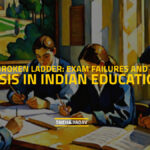
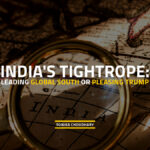
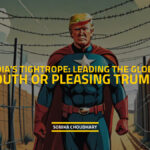




































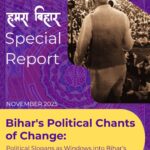










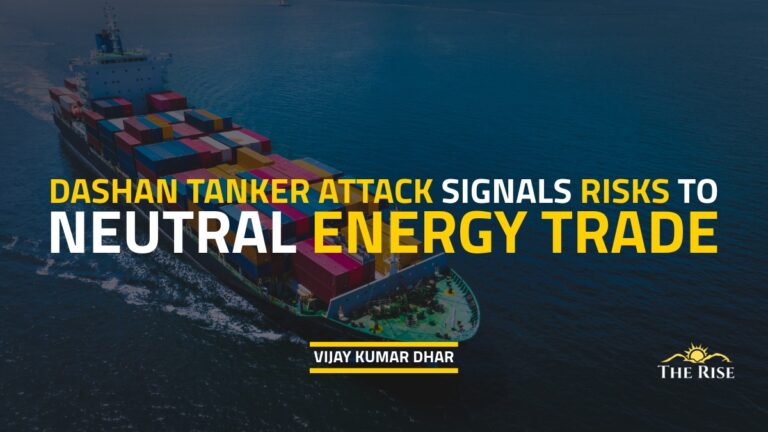

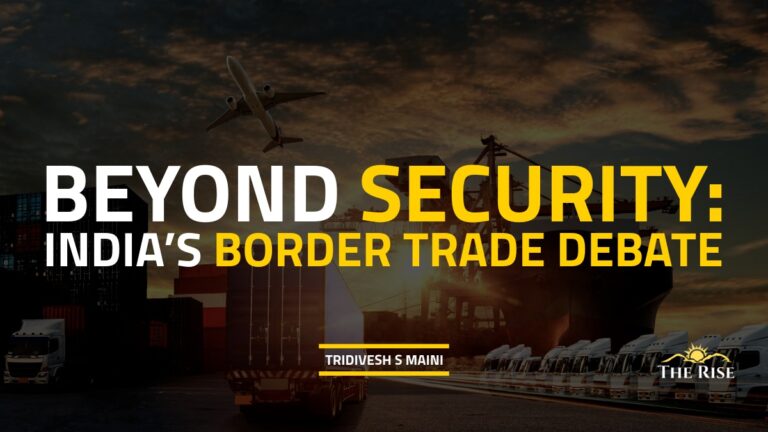
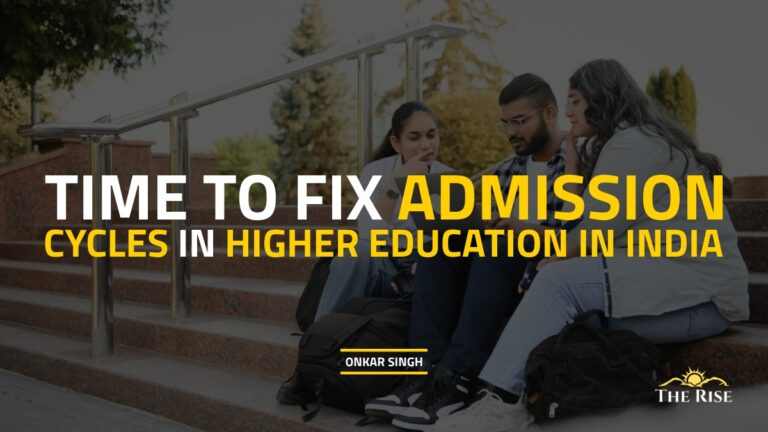
Pingback: How India Can Abrogate the Indus Waters Treaty - TheRise.co.in